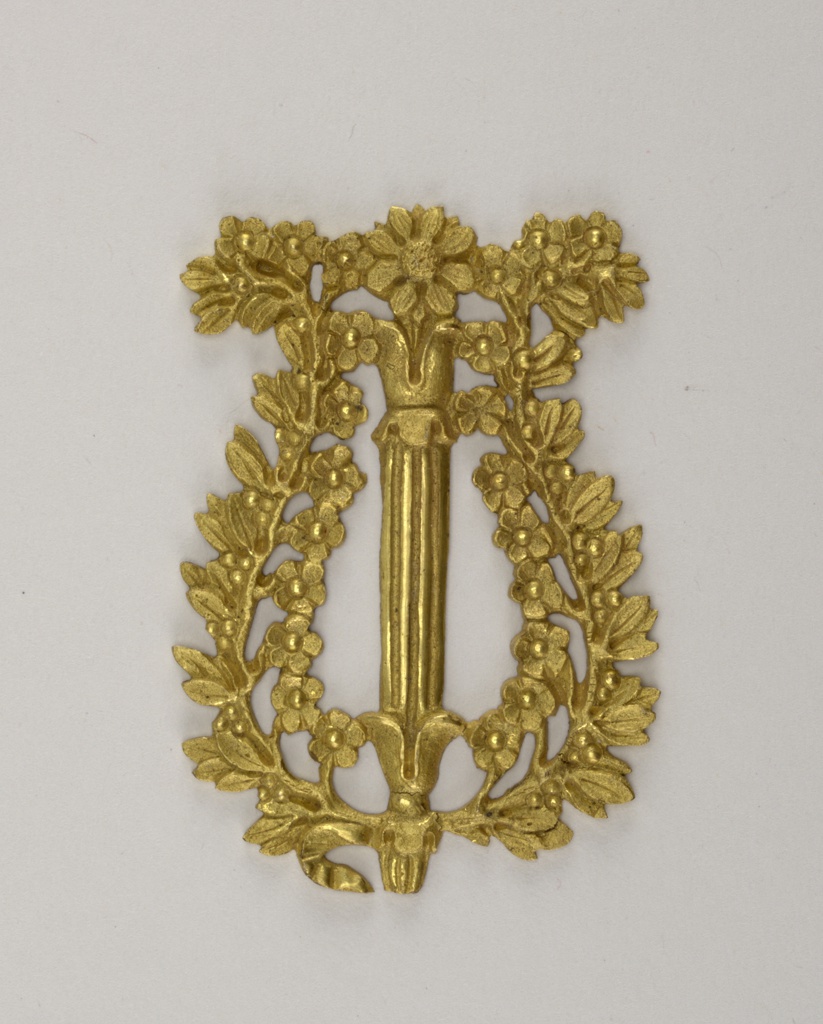Gilt bronze furniture mounts have long been an element of decoration in French interiors. In addition to their use as ornament, they were highly functional. Their gilded surfaces added value and appeal to what would typically be a basic utilitarian purpose: protection for furniture. The mounts were generally fixed to the edges, corners, and feet of seating and case furniture, and also on cabinet and desk doors and drawers as handles and key hole flanges (escutcheons). The use of furniture mounts was at its peak between the 17th and 19th centuries. Furniture was typically produced from various kinds of wood (sometimes exotic and costly varieties), a material subject to damage through daily use, occasional careless mistreatment, and age.
France was the manufacturing center for gilt-bronze decorative objects during the 18th century. High standards of precision and craftsmanship were required in the making of these objects, and there were specific roles designated to specialized workers for each step of the design and manufacture process. Working within an atelier, or workshop, bronze makers’ tasks were divided amongst casters, chasers, and gilders. The year 1776 saw a reformation of the guild system, placing all bronze makers into a single guild.
The process began with a carver, who created a three-dimensional model from a two-dimensional design of the object. The model was then encased in wax to create a mold that was pressed in a box of sand. Next, molten bronze was poured into the depression created by the mold, then cooled. Once the bronze form cooled, the gilding process could begin: a ground gold mixture was coated over the bronze surface, heated over a fire, and the process repeated numerous times to ensure the gold layer was thick enough.[2] Another name for this step is the French term ormoulu (or meaning gold, and moulu referring to ground gold). This final step was the most crucial, as well as the source of a mount’s substantial monetary value.
Dating from ca. 1800, this mount in the Neoclassical style depicts a lyre formed of berried foliage centered by a torch. Furniture mounts primarily related to or mimicked other decorative objects within a room. Cooper Hewitt’s collection contains many furniture mounts that portray subjects referencing Greek and Roman classical motifs including floral wreaths, arabesques, columns, and mythological creatures including Medusa, Venus, sea creatures, and winged monsters. Mounts not only embellish and protect a room’s furnishings; their gilded surfaces reflect light from windows, mirrors, and candles—further enhancing the interior space.
This object is currently on view in Tablescapes: Designs for Dining.
Molly Beegoo is a Curatorial Fellow in the Product Design and Decorative Arts department at Cooper Hewitt, Smithsonian Design Museum, and a first-year graduate student in the History of Design and Curatorial Studies program offered jointly by Cooper Hewitt and Parsons School of Design.
[1] Kisluk-Grosheide, Daniëlle O. “The Art, Form, and Function of Gilt Bronze in the French Interior.” In Heilbrunn Timeline of Art History. New York: The Metropolitan Museum of Art, 2000–http://www.metmuseum.org/toah/hd/gilt/hd_gilt.htm (April 2008).

One thought on “Shiny, Sturdy and Sophisticated”
Carol Anne Leonard on November 9, 2018 at 10:34 pm
So interesting Molly. I have seen these but never thought to find out the history behind them.